whats wrong with standard Swing JTable and DefaultTableModel
sure there are missing some ideas for productions code (make the things better)..., selectAll for Editor, cell alingment, background, foreground, stripping, font, Look and Feels etc... (most of custom Look and Feels doesn't works correctly with built-in Components pallette in Netbeans Swing Framework),
SwingX have got Components pallette for Netbeans, better and safest way, maybe you have look at ...

import java.awt.*;
import java.awt.event.*;
import java.text.NumberFormat;
import java.util.EventObject;
import javax.swing.*;
import javax.swing.table.*;
public class EditorTest {
private JScrollPane getTableComponent() {
String[] colNames = {"Stock", "Price", "Shares", "Quantity", "Action", "Action", "Holder"
};
final Object[][] data = {{"MSFT", Double.valueOf(12.21), Integer.valueOf(10),
Integer.valueOf(0), "Buy", "Sell", "Bill"}, {"IBM", Double.valueOf(13.21), Integer.valueOf(12),
Integer.valueOf(0), "Buy", "Sell", "Tim"}, {"ORACLE", Double.valueOf(21.22), Integer.valueOf(11),
Integer.valueOf(0), "Buy", "Sell", "Tom"}
};
DefaultTableModel model = new DefaultTableModel(data, colNames) {
private static final long serialVersionUID = 1L;
@Override
public Class getColumnClass(int col) {
return data[0][col].getClass();
}
};
JTable table = new JTable(model);
TableColumnModel colModel = table.getColumnModel();
colModel.getColumn(1).setCellRenderer(new DoubleRenderer());
colModel.getColumn(3).setCellRenderer(new SpinnerRenderer());
colModel.getColumn(4).setCellRenderer(new ButtonRenderer());
colModel.getColumn(5).setCellRenderer(new ButtonRenderer());
colModel.getColumn(3).setCellEditor(new SpinnerEditor());
colModel.getColumn(4).setCellEditor(new ButtonEditorA(table));
colModel.getColumn(5).setCellEditor(new ButtonEditorA(table));
table.setCellSelectionEnabled(true);
Dimension d = table.getPreferredSize();
table.setPreferredScrollableViewportSize(d);
return new JScrollPane(table);
}
public static void main(String[] args) {
JFrame f = new JFrame();
f.setDefaultCloseOperation(JFrame.EXIT_ON_CLOSE);
f.add(new EditorTest().getTableComponent());
f.pack();
f.setLocation(100, 100);
f.setVisible(true);
}
}
class SpinnerEditor extends AbstractCellEditor implements TableCellEditor {
private static final long serialVersionUID = 1L;
private SpinnerNumberModel model = new SpinnerNumberModel(0, 0, null, 1);
private JSpinner spinner = new JSpinner(model);
private int clickCountToStart = 1;
public Component getTableCellEditorComponent(JTable table, Object value, boolean isSelected, int row, int column) {
spinner.setValue(((Integer) value).intValue());
return spinner;
}
public Object getCellEditorValue() {
return (Integer) spinner.getValue();
}
@Override
public boolean isCellEditable(EventObject anEvent) {
if (anEvent instanceof MouseEvent) {
return ((MouseEvent) anEvent).getClickCount() >= clickCountToStart;
}
return true;
}
@Override
public boolean shouldSelectCell(EventObject anEvent) {
return true;
}
@Override
public boolean stopCellEditing() {
return super.stopCellEditing();
}
@Override
public void cancelCellEditing() {
super.cancelCellEditing();
}
}
class ButtonEditorA extends AbstractCellEditor implements TableCellEditor, ActionListener {
private static final long serialVersionUID = 1L;
private JTable table;
private JButton button = new JButton();
private NumberFormat nf = NumberFormat.getCurrencyInstance();
private int clickCountToStart = 1;
public ButtonEditorA(JTable table) {
this.table = table;
button.addActionListener(this);
}
public void actionPerformed(ActionEvent e) {
StringBuilder sb = new StringBuilder();
int row = table.getEditingRow();
int col = table.getEditingColumn();
//System.out.printf("row = %d col = %d%n", row, col);
sb.append((String) table.getValueAt(row, 6));
sb.append(" has ");
sb.append(((col == 4) ? "bought " : "sold "));
sb.append(((Integer) table.getValueAt(row, 3)).toString());
sb.append(" shares of " + (String) table.getValueAt(row, 0));
sb.append(" at " + nf.format(((Double) table.getValueAt(row, 1)).doubleValue()));
stopCellEditing();
System.out.println(sb.toString());
}
public Component getTableCellEditorComponent(JTable table,
Object value,
boolean isSelected,
int row, int column) {
button.setText(value.toString());
return button;
}
public Object getCellEditorValue() {
return button.getText();
}
@Override
public boolean isCellEditable(EventObject anEvent) {
if (anEvent instanceof MouseEvent) {
return ((MouseEvent) anEvent).getClickCount() >= clickCountToStart;
}
return true;
}
@Override
public boolean shouldSelectCell(EventObject anEvent) {
return true;
}
@Override
public boolean stopCellEditing() {
return super.stopCellEditing();
}
@Override
public void cancelCellEditing() {
super.cancelCellEditing();
}
}
class SpinnerRenderer implements TableCellRenderer {
private SpinnerNumberModel model = new SpinnerNumberModel(0, 0, null, 1);
private JSpinner spinner = new JSpinner(model);
public Component getTableCellRendererComponent(JTable table,
Object value, boolean isSelected, boolean hasFocus, int row, int column) {
spinner.setValue(((Integer) value).intValue());
return spinner;
}
}
class ButtonRendererA implements TableCellRenderer {
private JButton button = new JButton();
public Component getTableCellRendererComponent(JTable table, Object value, boolean isSelected, boolean hasFocus, int row, int column) {
button.setText(value.toString());
return button;
}
}
class DoubleRenderer extends DefaultTableCellRenderer {
private static final long serialVersionUID = 1L;
private NumberFormat nf = NumberFormat.getCurrencyInstance();
public DoubleRenderer() {
setHorizontalAlignment(RIGHT);
}
@Override
public Component getTableCellRendererComponent(JTable table,
Object value, boolean isSelected, boolean hasFocus, int row, int column) {
super.getTableCellRendererComponent(table, value, isSelected, hasFocus, row, column);
setText(nf.format(((Double) value).doubleValue()));
return this;
}
}

